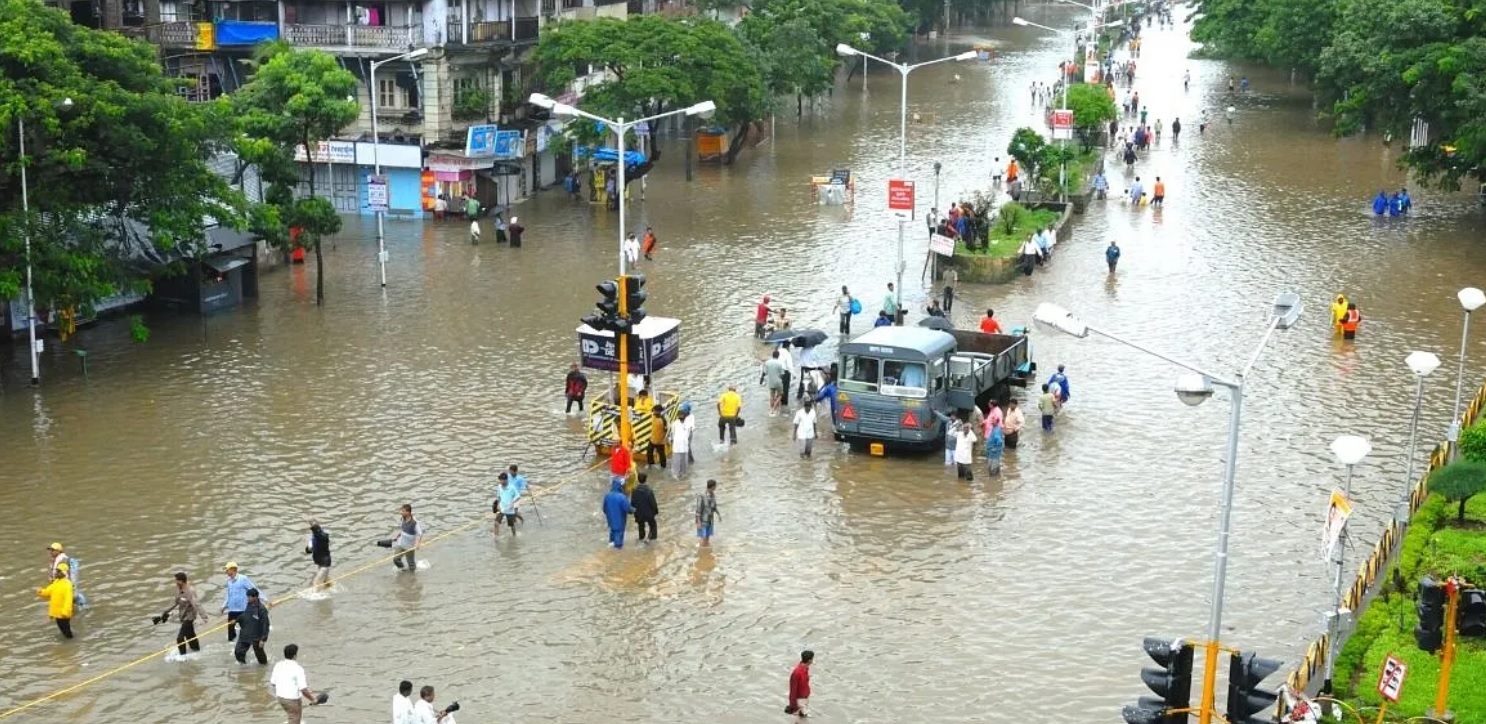एक लंबे समय से मुंबई निवासी के रूप में, एक वार्षिक चेकलिस्ट है, मेरा परिवार मानसून का स्वागत करने के लिए रखता है, वर्ष का एक मौसम जो दोनों एक ही समय में प्यार और आशंका है।
इसमें शामिल हैं: आपातकालीन बिजली की आपूर्ति, पर्याप्त राशन, छतरियों और रेनकोट सहित सुरक्षात्मक गियर और आवश्यक प्लास्टिक बैग जो हमारे सबसे मूल्यवान उपकरणों को कवर करते हैं।
पिछले कुछ दिनों में, चेकलिस्ट उपयोगी साबित हुई है। 100 किमी / घंटा की हवा की गति और बाढ़ जैसी स्थिति के साथ, 330 मिमी वर्षा के बाद यह लगभग ऐसा है जैसे कि शहर, जो लाखों और ब्रेड के साथ मक्खन की आपूर्ति करता है, ने अपना धैर्य खो दिया है और अपने लोगों से खुद को दूर कर लिया है।
ट्रेनों पर फंसे सैकड़ों, मकान ढह गए, सौ से अधिक पेड़ उखड़ गए और 4 फीट से अधिक की बाढ़ ने मरीन ड्राइव को मार डाला – ये घटना 48 घंटों के भीतर हुई। यहां तक कि राजकीय जेजे अस्पताल ने भी अपने परिसर में टखने-गहरे पानी को देखा है।
साल-दर-साल, मुंबई का दिमाग परीक्षण में लगाया जाता है और शहर उछलता रहता है, लेकिन जिस चीज पर किसी का ध्यान नहीं जाता है वह मानव जीवन, आजीविका और बुनियादी ढांचे को अभूतपूर्व नुकसान पहुंचाता है।
तो हम क्या कर सकते हैं और कब तक हम अधिकारियों को दोष दे सकते हैं?
प्रत्येक निवासी से पूछें कि पिछले कुछ दशकों में क्या बदल गया है और सामान्य उत्तर हैं: अंतरिक्ष संकट, पर्यावरण अतिक्रमण और जनसंख्या विस्फोट। निश्चित रूप से, शहर सभी का खुले हाथों से स्वागत करता है और संस्कृति का पिघलता हुआ बर्तन बन गया है, लेकिन बुनियादी ढांचे पर तनाव का क्या?
तेजी से हो रहे शहरीकरण और सम्मिश्रण ने ग्रीन स्पेस और मैंग्रोव को काफी कम कर दिया है। इसके अलावा, पानी के निकायों में जमा की समस्या है। मीठी नदी व्यवस्थित थकावट का एक प्रमुख उदाहरण है।
इमारतों या रेलवे लाइनों के निर्माण ने वर्षा जल निकासी प्रणाली पर सीधा दबाव डाला जो कि अंग्रेजों द्वारा एक सदी पहले बनाया गया था। शहर में प्रति घंटे 1400 मिमी बारिश के साथ सीवर की क्षमता 25 मिमी प्रति घंटे बारिश है।
जब मुंबई ने 2005 की विनाशकारी बाढ़ को देखा, तो बृहन्मुंबई नगर निगम (बीएमसी) ने जल निकासी क्षमता को 50 मिमी तक बढ़ाने के लिए ब्रिम्स्टोवड परियोजना का प्रस्ताव रखा।
15 साल और 4,000 करोड़ रुपये बाद में, परियोजना अभी भी अधूरी है और मनीकंट्रोल की एक रिपोर्ट के अनुसार, 58 परियोजनाओं में से केवल 27 (नालियों का विस्तार करने के लिए) पूरा किया गया है।
तो तत्काल समाधान क्या हैं?
डॉ। जलग्रहण प्रबंधन विशेषज्ञ अजीत गोखले बताते हैं कि बाढ़ के प्रकार और उन्हें रोकने के लिए क्या किया जा सकता है।
“ऊपर की ओर बाढ़ एक मानव निर्मित कारण है। मानव हस्तक्षेप के कारण, पानी एक बिंदु से दूसरे तक नहीं जा सकता है और यह जमा होता है। यह एक बांध, भवन, बांध, त्वरित बेकर और यहां तक कि एक सड़क डिवाइडर भी हो सकता है। डेवलपर्स खुद को भारी बारिश से बचाने के लिए भवन स्तर को बढ़ाते हैं, जो पूरे क्षेत्र को प्रभावित करता है। ”
It includes: emergency power supplies, enough rations, protective gear including umbrellas and raincoats, and essential plastic bags that cover our most valuable equipment.
In the past few days, the checklist has proven useful. With wind speeds of 100 km / h and a situation similar to a flood, after up to 330 mm of precipitation it is almost as if the city, which supplies millions with bread and butter, has lost its patience and distanced itself from its people.
Hundreds of stranded on trains, houses collapsed, over a hundred trees uprooted, and a flood of over 4 feet hit Marine Drive – these events happened within 48 hours. Even the state JJ hospital has witnessed ankle-deep water on its premises.
Year after year, Mumbai’s mind is put to the test and the city keeps bouncing, but what goes unnoticed is unprecedented damage to human life, livelihoods and infrastructure.
So what can we do and how long can we blame the authorities?The Better India speaks to citizens who have lived in the city for several years. This is what you have to say:
Limitation of specification
Ask each resident what has changed in the last few decades and the general answers are: space crisis, environmental encroachment and population explosion. Sure, the city welcomes everyone with open arms and has become a melting pot of culture, but what about the strain on infrastructure?
The rapid urbanization and concretization has significantly reduced the green space and mangroves. In addition, there is the problem of deposits in bodies of water. The Mithi River is a prime example of systematic exhaustion.
The construction of buildings or railway lines put direct pressure on the rainwater drainage system that was built by the British a century ago. The sewer capacity is 25 mm of rain per hour in a city with up to 1400 mm of rain per hour.
When Mumbai saw the devastating floods of 2005, the Brihanmumbai Municipal Corporation (BMC) proposed the Brimstowad project to increase the drainage capacity to 50mm.
15 years and Rs 4,000 crore later, the project is still incomplete and, according to a report from Moneycontrol, only 27 of the 58 projects (to expand the drains) have been completed.
So what are immediate solutions?
Dr. Water catchment management expert Ajit Gokhale explains the types of flooding and what can be done to prevent them.
“Upstream flooding is a man-made cause. Due to human interference, water cannot flow from one point to another and it accumulates. This can be a dam, building, dam, quick baker, and even a road divider. Developers also raise the building level to protect themselves from heavy rainfall, which in turn affects the entire area, ”he says.
From rainwater use to respecting the stream, he has the following solutions:

